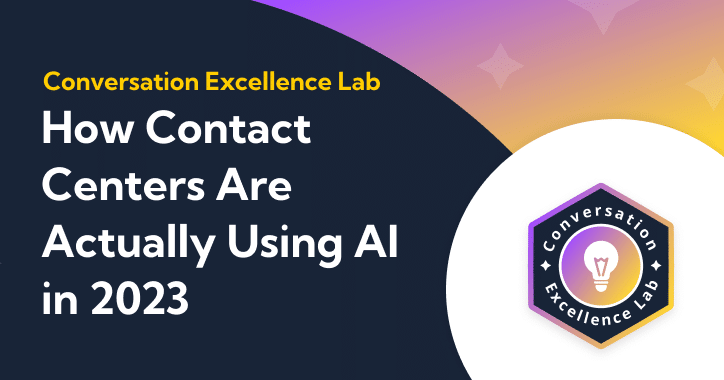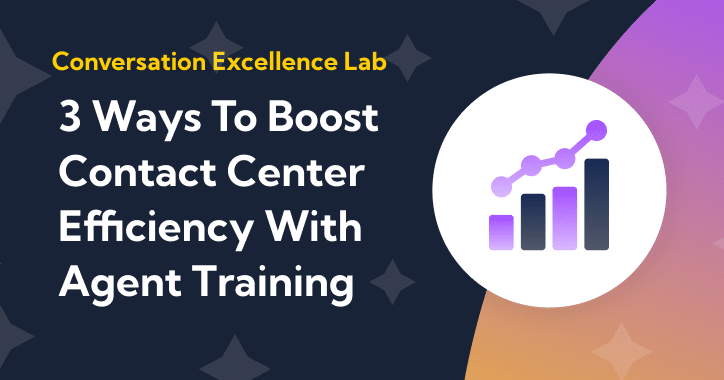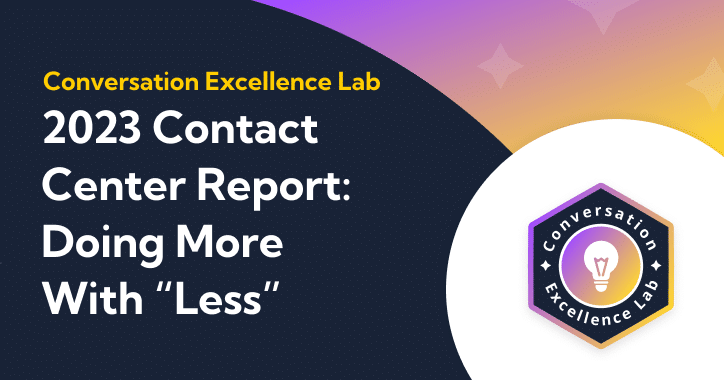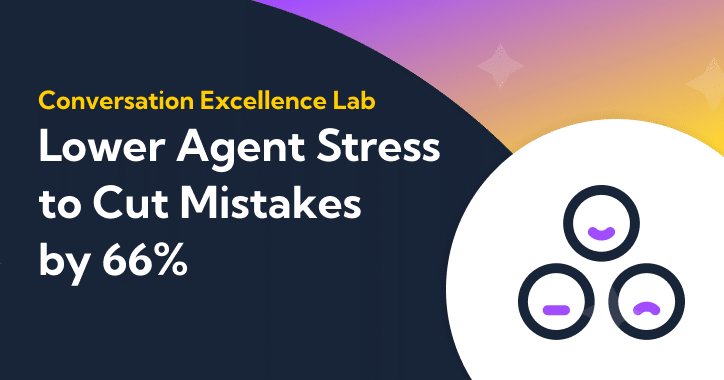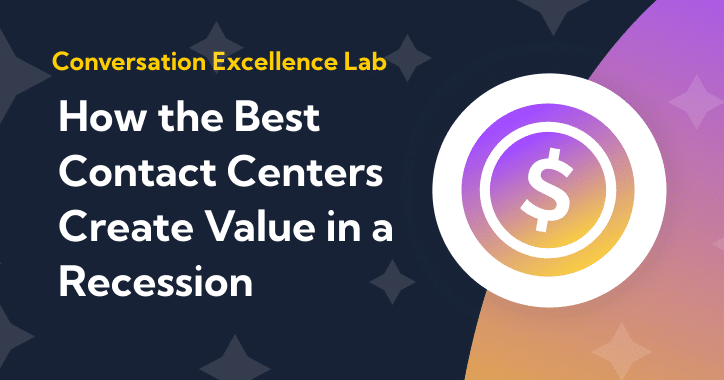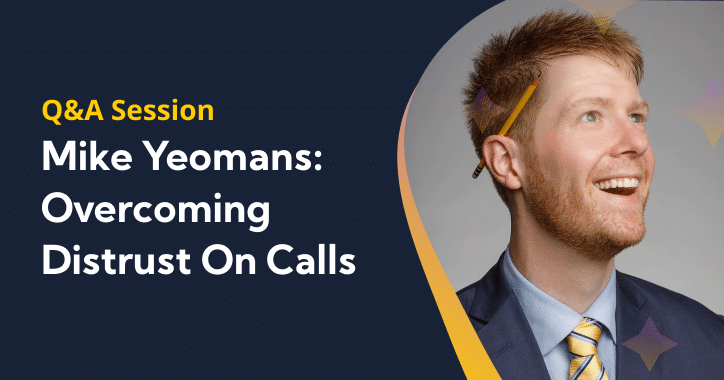In our most recent report on how to recession-proof your contact center, we found that executives who viewed their contact center as a waste of resources had nearly 3x the agent churn compared to those that did not, as well as lower NPS and CSAT scores across the board.
If an executive views their contact center as valuable and worthy of investment, that suggests that they’re not just investing money in their agents; they are investing their time and attention, and they are making prioritization decisions accordingly.
Perceptions of value were highly predictive of business outcomes, but what does that mean for the day-to-day of front-line agents?
Earlier this year, we surveyed over 2,000 contact center agents to better understand what makes them happy in their roles, and where they see themselves in the future. Combining the results from these two reports provides a fascinating look into how executive attitudes influence the agent experience.
Key Findings:
- Lower executive buy-in is correlated with higher agent attrition rates.
- But this relationship is not causal. There is a multitude of factors both small and large that play a role in preventing attrition.
- Get to know your agents and what motivates them so you can best tailor your retention strategy.
Subscribe to future Conversation Excellence Lab reports below:
Executive Value Perception and Agent Attrition
We asked executives, on a scale of 1 (strongly disagree) to 5 (strongly agree), how much they agreed with the following statement: Anything other than self-service support for customers ends up being a drain on customer resources.
Those who responded with a “1” had an average agent attrition rate of 16.9% per year versus 48% for those who responded with a “5”. That’s nearly a 3x increase.
For the seven industries with the lowest executive value perception (Travel & Hospitality, Transportation, Insurance, Utilities, Retail, Manufacturing, and Telecommunications), the relationship between attrition and value perception was linearly correlated. The less value a leader sees in their contact center, the higher the agent attrition they are likely to experience.
Figure 1. Value perception (1-5) vs. agent churn rate
On the other end of the spectrum, Business Process Outsourcing (BPOs) companies had the highest contact center value perception — and the lowest rates of agent churn.
The relationship between value perception and attrition, however, is not so simple. While executive value perception may lead to more investment of time, resources, and attention, those don’t directly lead to agent attrition. They need to be funneled through people, tools, processes, and systems before reaching the agent. For example, even if an executive is an agent’s biggest advocate, a dictatorial manager can cause agents to churn, and vice versa.
This nuance can explain some fluctuation we found between industries. For example, Real Estate had a relatively low rate of churn and high job satisfaction even though it had a lower executive value perception. In this case, there is another factor keeping agents happy. Perhaps it’s pay: real estate agents were more satisfied with their pay than the average agent.
In fact, when we asked agents what would make them leave their job, or stay at their job, the most mentioned factor was pay.
But from our analysis, the correlation between pay and executive value perception was not one-to-one. For some industries, like Retail and Logistics, the relationship was clear, but others displayed varied results.
What is clear, however, is that there is a multitude of factors that protect employees from churning. Executive value perception is an important one with trickle-down effects, but it's not the only one. Factors like pay, benefits, culture, or even simply having a friend at work can have an outsized impact.
How to Keep Attrition Low Without Breaking the Bank
If you see your contact center as a value-creation center, you’re already on the right path. To reach peak value, you’re going to want to make sure that you’re investing in the right people, tools, and technologies so that your agents have everything they need to do their jobs well and bring value to your organization.
But all of that investment won’t keep agents around if they aren’t satisfied. Pay is one way to move the needle, but keep in mind: pay and satisfaction with pay are two different metrics, and they aren’t always aligned. Different people have different salary expectations, and those expectations are moderated by how happy they are with the rest of their work environment.
There are other tried and true ways to bolster agent satisfaction, and therefore agent attrition, without cutting into your bottom line: public shout-outs, team events, company gifts, mentorship programs, and otherwise creating opportunities for growth all have a strong impact on agent satisfaction.
It’s important to understand who your agents are and what they are motivated by. We asked over 2,000 agents what they care about and the results varied dramatically by age.
Figure 2. Agent motivation by age cohort
Up until the age of 44, agents were primarily interested in opportunities for advancement. Things like 1+1 sessions with their manager, professional development, and regular performance evaluations can contribute to this group’s satisfaction more than pay. On the other end of the spectrum, those aged 55+ are most motivated by flexibility: they want to be able to take days off when they need to and work from home if they want.
You can mitigate agent attrition by tailoring your approach to your contact center’s composition and checking in regularly to ensure that your investments are yielding results.
With Great Value Comes Great Responsibility
Value perceptions are a self-fulfilling prophecy: if you believe in the value of your contact center, either because it's performing well or because you believe in its potential, you’re going to invest resources in it, and that value will be realized.
But you have to ensure that those resources are invested productively. If you want your agents to stay with you, get to know them. Instead of giving unlimited time off to someone who is hungry to learn, consider setting them up with a career coach. Instead of telling your social butterflies to work from home, give them an office where they can be lifted up by each other’s energy.
Attrition is a multidimensional phenomenon with both micro (friends, office situation, work schedule, etc.) and macro (culture, values, leadership, etc.) variables. Preventing agent attrition is not a one-size-fits-all strategy, but rather a dynamic approach that starts from a place of high value perception.
Sources
Balto. (2022, January 21). What an Employee’s Age Says About Their Goals in the Contact Center - Balto Ai. RSS. Retrieved September 14, 2022, from https://www.balto.ai/research/age-and-the-contact-center/
Balto. (2022, March 17). Where Do Contact Center Workers See Themselves in 5 Years? - Balto Ai. RSS. Retrieved September 14, 2022, from https://www.balto.ai/research/where-do-contact-center-workers-see-themselves-in-5-years/
Balto. (2022, March 29). Contact Center Attrition: What Agents Want in 2022 - Balto Ai. RSS. Retrieved September 14, 2022, from https://baltostaging.wpengine.com/research/contact-center-attrition-2022/
Balto. (2022, August 3). How to Recession-Proof Your Contact Center, According to 360+ Executives - Balto Ai. RSS. Retrieved September 14, 2022, from https://www.balto.ai/research/how-to-recession-proof-your-contact-center/
Brigham, T. (2022, March 3). Research Shows Having A Friend At Work Can Boost Happiness For Young People - Forbes. RSS. Retrieved September 14, 2022, from https://www.forbes.com/sites/tessbrigham/2022/03/03/research-shows-having-a-friend-at-work-can-boost-happiness-for-young-people/?sh=1aa78e481b12
SHRM. (2016, December 14). SHRM/Globoforce Influencing Workplace Culture Through Employee Recognition and Other Efforts - SHRM. RSS. Retrieved September 14, 2022, from https://www.shrm.org/hr-today/trends-and-forecasting/research-and-surveys/Pages/employee-recognition.aspx
Wronski, L. & Cohen, J. (2019, July 16). Nine in 10 workers who have a career mentor say they are happy in their jobs - CNBC Work. RSS. Retrieved September 14, 2022, from https://www.cnbc.com/2019/07/16/nine-in-10-workers-who-have-a-mentor-say-they-are-happy-in-their-jobs.html

